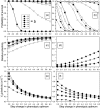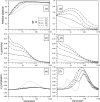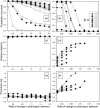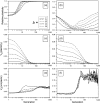The genetics of phenotypic plasticity. XVII. Response to climate change
- PMID: 31993084
- PMCID: PMC6976953
- DOI: 10.1111/eva.12876
The genetics of phenotypic plasticity. XVII. Response to climate change
Abstract
The world is changing at a rapid rate, threatening extinction for a large part of the world's biota. One potential response to those altered conditions is to evolve so as to be able to persist in place. Such evolution includes not just traits themselves, but also the phenotypic plasticity of those traits. We used individual-based simulations to explore the potential of an evolving phenotypic plasticity to increase the probability of persistence in the response to either a step change or continual, directional change in the environment accompanied by within-generation random environmental fluctuations. Populations could evolve by altering both their nonplastic and plastic genetic components. We found that phenotypic plasticity enhanced survival and adaptation if that plasticity was not costly. If plasticity was costly, for it to be beneficial the phenotypic magnitude of plasticity had to be great enough in the initial generations to overcome those costs. These results were not sensitive to either the magnitude of the within-generation correlation between the environment of development and the environment of selection or the magnitude of the environmental fluctuations, except for very small phenotypic magnitudes of plasticity. So, phenotypic plasticity has the potential to enhance survival; however, more data are needed on the ubiquity of trait plasticity, the extent of costs of plasticity, and the rate of mutational input of genetic variation for plasticity.
Keywords: climate change; evolutionary rescue; genetic assimilation; model; phenotypic plasticity.
© 2019 The Authors. Evolutionary Applications published by John Wiley & Sons Ltd.
Figures




References
-
- Barfield, M. , & Holt, R. D. (2016). Evolutionary rescue in novel environments: Towards improving predictability. Evolutionary Ecology Research, 17, 771–786.
-
- Bürger, R. , & Lynch, M. (1995). Evolution and extinction in a changing environment. Evolution, 49, 151–163. - PubMed
LinkOut - more resources
Full Text Sources

